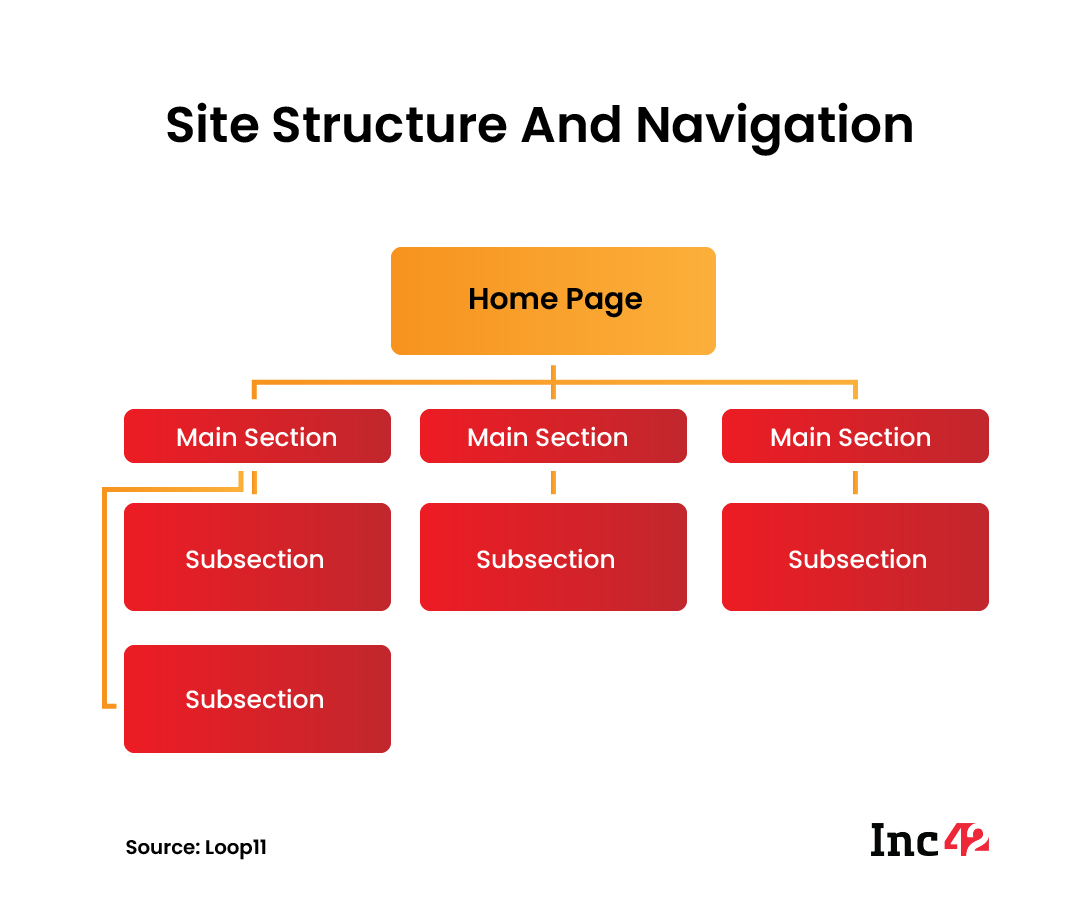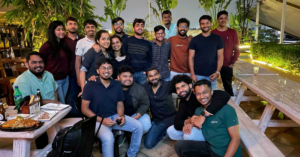Given that 53% of all website traffic comes from organic search, SaaS SEO is more than just nice to have—it’s an indispensable part of your brand’s digital success
Whether you’re launching a new product or scaling an existing solution, SEO is the key to unlocking massive organic traffic, greater brand awareness, and more product sign-ups
Read this exhaustive guide to set the proper foundation for your strategy. Start by listing down your SEO goals—whether you want to amplify your reach or maximise sign-ups
Whether you’re launching a new product or scaling an existing solution, SEO (Search Engine Optimisation) is the key to unlocking massive organic traffic, greater brand awareness, and more product sign-ups.
Given that 53% of all website traffic comes from organic search, SaaS SEO is more than just nice to have—it’s an indispensable part of your digital success.
But half-baked SEO efforts can do more harm than good.
So, if you truly want to tap into the power of search engine optimisation for your SaaS brand, deep dive into all aspects of SEO in this extensive guide. Let’s get started!
Why Is SEO Important For SaaS?
Canva used a combination of targeted keyword research, scalable landing pages, and personalised backlink outreach to get to an incredible milestone of 270 Mn annual visitors. The SaaS brand also raked in over 4 Mn backlinks and 20 Mn monthly active users.
Canva’s case study shows the success you can achieve with a strong SEO strategy. Let’s look at how exactly SaaS SEO can help you:
- Drive Organic Traffic: SEO is about building domain authority to win higher search rankings for your pages. This translates to better discoverability and more organic traffic. When you optimise your pages as per search engine ranking parameters, you can easily attract quality traffic for your industry.
- Convert Visitors Into Paying Customers: SaaS SEO can help you optimise your entire marketing funnel and drive conversions through the organic traffic you garner. You can target visitors at multiple touchpoints by effectively distributing your content and gradually turning them into paid users.
- Reduce Cost Per Acquisition: Instead of investing extra on pay-per-click ads, SEO brings you conversions (almost) for free. The reduced expense of driving traffic and boosting conversion will eventually minimise your cost per acquisition.
- Boost Online Visibility: One of the most significant benefits of SEO for SaaS brands is the added visibility it can produce. An ideal SEO setup puts your product in front of the target audience and generates buzz around it. You can also scale your efforts and gain greater visibility by optimising your pages for more keywords.
Now that you know the difference SEO can bring about, let’s jump to an 11-step roadmap to help you create your SEO strategy.
11-Step Process To Create And Implement A SaaS SEO Plan
SEO can become a key differentiator for you against a stream of competitors. It’s also a proven method to maximise your inbound lead generation, with a 14.6% close rate for leads collected through SEO against a 1.7% close rate for outbound leads.
So, let’s look at the three most essential aspects of SaaS SEO to help you build a killer strategy.
On-Page SEO
By definition, on-page SEO refers to all the tactics implemented within your website. Unlike off-page SEO, you have greater control over your on-page efforts to produce the desired results.
Here’s how you can optimise your website for the search engines:
Perform Extensive Keyword Research
Keyword research is the starting point of any SEO campaign. To gain high search rankings for relevant keywords, you have to create content optimised for these target words.
Follow this process to come up with a list of keywords for your brand:
- Identify client pain points and challenges that your product resolves
- Ideate seed keywords around these pain points to begin your research
- Use keyword research tools like SEMrush to dig deeper into your seed keywords
- Prepare a list of keywords that your competitors are ranking for
- Shortlist and analyse your final set of keywords for the search intent and volume
Talview is a case in point—optimised for the keyword “AI-powered hiring.” The SaaS brand ranks high on the second page of Google, with multiple blogs published for this high-performing keyword.

Create SEO-Friendly Content
Once you’ve defined the right keywords, the next step is producing rank-ready content for search engines. This includes landing pages, blogs, infographics, and other content formats you wish to publish on your website.
Here’s a checklist of some basic rules for optimising content for SEO:
- Meta Details: Incorporate your primary keyword in the meta title and description
- Content Structure: Properly divide your content into headings and subheadings and include both primary and secondary keywords across the content
- Optimise Images: Use compressed images with a descriptive alt text and file name
- Linking: Add relevant internal and external links to make your content authoritative
Take a page out of Chargebee’s book to see these points in action. The brand picked “customer retention” as one of its product-centric keywords and created multiple blogs targeting this keyword. Most of these blog posts rank in the first two search result pages on Google.

Repurpose Existing Content
Content repurposing is when you convert a piece of content from one format to another. For example, you can turn a blog post into a Twitter thread, an Instagram carousel, or a podcast—it’s essentially a remix of the original content to be distributed on various channels.
Here’s an easy roadmap for repurposing content in multiple formats:
Blog post → Medium post → YouTube video → LinkedIn post → Twitter thread → Quora answer
Hotelogix follows this strategy to distribute its blog content on social media channels with a short snippet to maximise traffic.
Repurposing content can expand your reach across different platforms. It can also save your efforts on content planning and creation and create opportunities to reuse your old and forgotten content.


Content Syndication
Content syndication is the practice of publishing the same piece of content on various third-party websites. You’re syndicating your content if you’re posting a blog on your brand website and reposting it on an industry magazine’s site.
Syndication helps you boost SEO authority by:
- Building brand awareness among the third-party website’s audience
- Increasing referral traffic from the site you’re syndicating to
- Boosting results for a CTA (Call To Action) added on the syndicating website, like subscribing to a newsletter
The idea behind content syndication is simple: publish quality content on a reputed third-party website and capture their audience’s attention.
Off-Page SEO
Off-page SEO includes techniques to optimise your presence beyond your website. This aspect of SEO focuses on building domain authority through external channels to win more backlinks.
Let’s look at how you can strategise for off-page SEO and beef up your domain authority score:
Create A Link Building Strategy
You have to gain quality backlinks for your website to build credibility for the search engines. This is where a link-building strategy will come in handy and take you on top of the SERPs (Search Engine Result Pages).
Put simply, link building is the practice of publishing your website links on third-party websites to redirect organic traffic. It also shows search engines that you’re a credible brand since so many other websites link to your site.
Here are a few elements you can include in your link building strategy:
- Linked and unlinked brand mentions
- Data-driven reports and ebooks
- Industry-specific infographics
- Product roundups
Remember: you want to build trust among search engines and your audience. So, invest only in white hat link-building practices to generate quality backlinks.
Publish Guest Blogs
Guest posting is a proven and predictable tactic to maximise the number of links for your website. You have to share a post on a third-party website demonstrating your industry expertise and knowledge. This post can include a few links to your website and send visitors to your page while they’re reading the blog.
So, the third-party website can deliver high-quality content to its audience while you get to direct all the traffic to your website organically.
Create Linkable Assets
Another easy way SaaS brands can win backlinks is by producing linkable assets, like ebooks, research reports, podcasts, and images. Remember a rule of thumb while creating these assets: the better your quality, the more backlinks you can earn.
WebEngage, for instance, has a complete directory of ebooks, blogs, podcasts, conferences, and webinars. So, other brands can cite their content and generate a backlink for the SaaS brand.

Given the vast content repository available on WebEngage, the brand enjoys more than 100,000 backlinks from close to 4000 domains!

Post On Q&A Forums
Forum posting is an off-page SEO practice that establishes trust and creates brand recognition among your target audience.
Brands can directly answer their prospects’ questions and capture their interest organically. These answers also create a backlink on the platform where you post an answer. Quora and Reddit are two of the most common channels for forum posting.
A Quora answer by Facilio’s cofounder presents the perfect example. The cofounder posted a detailed answer tackling every aspect of the question and presented a case for his knowledge in the domain.
At the end of his answer, he placed a CTA to visit Facilio and learn more about his venture—simple yet significant.

Technical SEO
Technical SEO is the backend aspect of SEO that ensures a website is aligned with the optimisation parameters of the search engines. It underlines all your SEO efforts in that you can produce the most high-quality content, but it will not rank if your website isn’t good enough for the crawlers.
Here are some of your top priorities to cover under technical SEO:
Simplify Site Structure And Navigation
The first step to kick-starting your technical SEO efforts is designing a clear and robust site structure. The structure dictates how your web pages are placed within your site. A flat structure ensures that crawlers can easily visit and assess all the pages. On the contrary, an unorganised site structure with uncategorised pages can decrease your SEO readiness.
Choose a navigation style before optimising any other part of your website. Then create a consistent URL (Uniform Resource Locator) structure to offer ease of crawling. These two methods will allow search engines to assess your entire website without roadblocks.

Optimise For Crawling And Indexing
Search engines crawl any website to understand its layout and content. This is where they identify broken links or URL errors, which can decrease your SEO score.
Another part linked to crawling is indexing, which measures your site architecture. Crawlers analyse your entire website and linking map to see how a visitor would go through your site to find information.
To ace both these factors, you need to:
- Periodically check and correct your URLs
- Add redirects to reclaim any lost links
- Include a schema markup for the ease of indexing
- Incorporate inbound links for redirecting link juice
You can use tools like Screaming Frog to review your website’s crawlability and indexability. Then, make the necessary changes to ensure you’re meeting the crawlers’ parameters.
Boost Page Load Speed
Your website’s loading speed can directly improve or diminish your site’s ranking. A fast-loading website offers a better user experience and meets the SEO criteria for a higher ranking.
Let’s look at a few ways to increase your page load speed:
- Reduce the size of your web pages by compressing images and reducing cache
- Experiment with your CDN’s set up to test your page load time
- Remove any third-party scripts on your website
Power up your search engine rankings by improving your loading time. Alongside backlinking, it’s one of the most crucial SEO tactics to increase your rank.
Start Optimising Your Online Presence
The SaaS industry is becoming bigger than ever each year. SaaS SEO promises impressive results if you want to stand out from the crowd and create a unique brand identity.
Read this exhaustive guide to set the proper foundation for your strategy. Start by listing down your SEO goals—whether you want to amplify your reach or maximise sign-ups. Chalk out a game plan for each of the three aspects of SEO discussed in this guide.
Remember to measure your progress with relevant metrics to iterate your strategy if required.



![Read more about the article [Startup Bharat] This Coimbatore-based cleantech startup is building autonomous bots to clean solar panels](https://blog.digitalsevaa.com/wp-content/uploads/2021/04/Solaviofounders-1617691587571-300x150.jpg)






